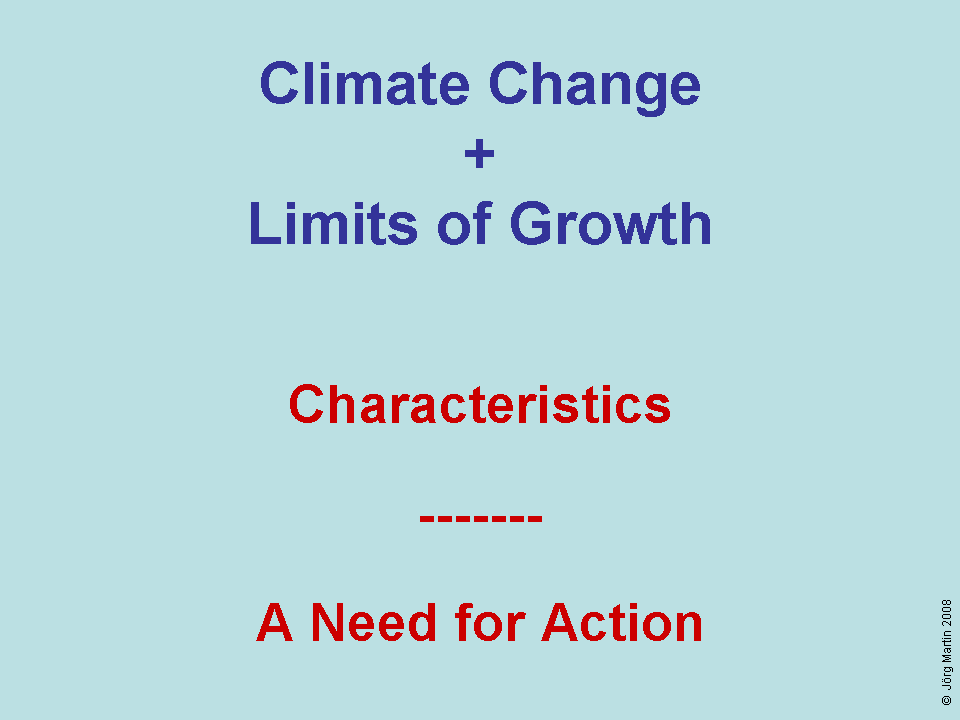
| Growth Curves | |
| • | Water Lily Pond |
| • | Pond Curves |
| • | Expection Curve |
| • | Tough Luck! |
| Limits of Growth | |
| • | Positive Feedback |
| • | Club of Rome |
| • | Amazon Region |
| Methane | |
| • | Resources |
| • | Chain Reaction |
Example 2: Methane - Human and Fossilized Potential Emissions
The goal of worldwide climate protection is the limitation of a maximum increase in the global warming average to a value of below 2°C. In the view of previous research results, this goal can only be reached so long as the total sum of carbon dioxide equivalents produced by humans does not exceed a value of 340 ppm (Anthropogenic Emissions Goal).
At the time of this estimation, the possible release of fossilized methane as a result of progressive global warming had not been taken into account.
The carbon dioxide equivalent of fossilized methane is approximately[44]:
- 30 ppm Methane in the moorlands of Siberia
- 190 ppm Methane in the permafrost of non-Pleistocene ages
- 240 ppm Methane in the permafrost of the Yedoma (Pleistocene age)
- 1,650 ppm Methane hydrate in the area of the continental shelves
Methane hydrate is a fixed methane compound arising from the buildup of methane in the lattice structure of seawater. It is only stable at high pressure and low temperature. Such conditions predominate at the slopes of the continental shelves from a water depth of around 500 m[45].
As yet, the total amount of methane hydrate has not been determined with any certainty. Estimates of its existing worldwide carbon dioxide equivalent vary between 460 ppm and 2,820 ppm.
In order to establish the carbon dioxide equivalent for the release of this methane into the atmosphere, the stated values would have to be multiplied by a factor of 21. However, since methane breaks down into carbon dioxide after around 8 years, the multiplication factor returns back to a value of 1.
| Associated Slide |
 |
| Illustrating Slides |
 |
| Slide 1 |